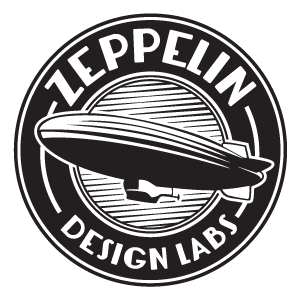Home › Forums › Quaverato Forum › Quaverato FAQ & Support › Quaverato GitHub resources and instructions
Tagged: github, mightycore
- This topic has 7 replies, 3 voices, and was last updated 5 years, 8 months ago by
brach.
-
AuthorPosts
-
YummyFuzz
ParticipantHello ZDL,
I purchased and built the Quaverato (SN:ZD2331) through your Australian distributor, Signal Chain.
It was a lovely build and the pedal works fine (though I do run a buffer before it).It has the version 1.1.3 software, and I’m looking to update it to 2.3.6.
However, I’m up to the bit where the ZDL Updater doesn’t support my ISP programmer (avrdude.exe Error: Could not find USBtiny device). So I’m just trying to verify and compile the Quaverato_2.3.6.ino using Arduino 1.8.9 (on Win7 PC). I’ve got the TaskScheduler.h (from GitHub), but it is looking for the header .h files (ramp256.h, saw256.h, etc). Are these also files that should be in the GitHub repository?
And a few questions on the GitHub instruction for the Quaverato:
1.From this repository, download the latest .ino sketch file and all of the wave table files. Place them all together in your sketchbook. – What wave files are there for the Quaverato?
2.Using Boards Manager in Arduino, install the MightyCore AtMega 328-PU board. – I can’t see this in Arduino, can you add a link to it if it is in GitHub?
7.Flash the sketch to the pedal. We usually use an independent installation of AVRdUde for this, using this command line: – What command?
That’s it. Good luck! (<- unless that’s the command).
Kind Regards.
YummyFuzz
ParticipantSo it occurred to me that the .h files are the wave tables (ramp, saw, sine, sq, tri) step one is referring to, but it will also need:
#include <MIDI.h>
#include <EEPROMex.h>I’m just looking at the instructions for the other ZDL products in GitHub which seem to have a bit more detail that may help me with the Quaverato.
zdlAdmin
KeymasterWow, YummyFuzz, you are brave and dedicated! I am sorry about the apparent loose ends in the Quaverato documentation there on GitHub. One error I see is that the Quaverato sketch wants the MiniCore library, not MightyCore. HEREare the instructions for incorporating MiniCore into your Arduino installation using the Arduino boards manager. I will meet with my software guy in the morning to review what pieces are missing.
zdlAdmin
KeymasterWe have updated the GitHub repository and the instructions in the README. We are (fairly) confident we have it all right this time. Thanks for your patience and please let us know if you have success. We are very interested to hear if you are successful in modding the software to your needs.
YummyFuzz
ParticipantSuccess!
I was able to verify and compile the Quaverato_2.3.6.ino in Arduino 1.8.9, and flash it to my Quaverato with my USBasp ISP programmer. Arduino did throw and error “avrdude: warning: cannot set sck period. please check for usbasp firmware update.” but a quick Google suggested that was irrelevant, and the load was successful.
Checking the pedal version, flashes 2 3 6, and the first thing I noticed was how much smoother the rate knob behaves.
Things I learned:
Arduino
File->Manager->Settings->Additional Boards Manager URLs: (and paste in)
https://mcudude.github.io/MiniCore/package_MCUdude_MiniCore_index.json
In order to see the MiniCore Boards under ToolsIn order to get it to compile, I had to edit in the .ino file as below:
#include <ramp256.h>
#include <saw256.h>
#include <sine256.h> //This table has been modified
#include <sq256.h>
#include <tri256.h>To
#include “ramp256.h”
#include “saw256.h”
#include “sine256.h” //This table has been modified
#include “sq256.h”
#include “tri256.h”Because something about the angle bracket (<>) if it is in the library path (which is isn’t, i.e I didn’t use the Include Library->Add .ZIP Library for the wave tables), and double quotes (“”) if it is just in the sketch folder.
It compiled, then I found the right driver for my USBasp (https://zadig.akeo.ie/), and flashed it to the board with Sketch->Upload Using Programmer.
I’m so happy! Thank you so much for the super prompt response.
I have one followup question regarding the instructions in 7a:
7a. If your pedal does not have presets saved you can flash the dafaults by placing the quaveratoeeprom.hex file in the same place as your compiled sketch and appending ” -U eeprom:w:quaveratoeeprom.hex:i” to the above command line.About what you mean by presets? How do you save presets? What happens without presets? (not sure I understand).
Thank you again, now I know I can compile, load, and reset, I’ll get experimenting.
I’ll let you know how I go.
zdlAdmin
KeymasterYummyFuzz, you’re the best. Good work. Congratulations. Well done. Thank you for your detailed report. It will be helpful to others.
Regarding presets: this functionality is only accessible / useable with the MIDI mod. It is documented in the MIDI Owner’s Guide on our website. You can set up the pedal just as you like, apply a mysterious sequence of button presses and knob twists, and save the pedal’s configuration. The pedal holds up to six presets, but you can only recall them by sending the pedal a Program Change message through the optional MIDI interface.YummyFuzz
ParticipantHello ZDL,
I noticed there was a new version of the Quaverato software in Github, v2.4.2 which I’ve loaded into my device. I can see all the new lines are around the “relay_pin_Isolator”, just wanted to see if you could add a release note for what this version does.
Kind regards,
YummyFuzz
brach
ModeratorThese lines have to do with the “Quiet switching” feature (in board version 8.2), in which the audio signal is shunted to ground via a FET before the relay switches, and then after the relay switches the FET switch is relased and the signal is passed through to the output again. All this happens in about 25mS or so.
This helps with the audible relay click that happens sometimes. -
AuthorPosts


